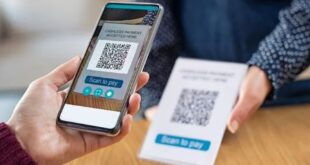For decades, go-to-market (GTM) strategies followed a predictable, linear progression: awareness, consideration, purchase. In today’s hyper-connected, digitally dominant business environment, this model is no longer sufficient. Buying journeys are now fluid, multi-directional, and heavily influenced by a network of stakeholders and touch points.
Gartner reports that a typical B2B buying group comprises 6-10 decision-makers, each consulting 4-5 information sources to inform their view. This is a dynamic that renders the old funnel inadequate in capturing the complexity of modern buying behavior.
The Collapse of the Traditional Funnel
Buyer Autonomy: According to Gartner, 75% of B2B buyers prefer a rep-free experience, and by 2025, 80% of B2B sales interactions will occur through digital channels.
Non-Linear Journeys: Forrester finds that 86% of B2B purchases stall mid-process, with 81% of buyers dissatisfied post-purchase, highlighting a disconnect between buyer expectations and seller execution.
Omni-Channel Expectations: McKinsey’s latest B2B survey shows that high-growth organizations are those enabling buyers to switch seamlessly between e-commerce, remote, and in-person interactions without disruption.
The Shift to a Full-Circle Engagement Model
The modern GTM framework is best conceptualized as a continuous value loop, where the customer relationship is nurtured before, during, and long after the initial sale. This loop includes eight interconnected motions:
Attract – Position around outcomes, not products.
Engage – Address the needs of the entire buying committee, tailoring messaging to role-specific priorities.
Enable – Equip buyers with interactive tools, ROI calculators, and benchmarking resources; buyers using such tools achieve 1.8× higher deal conversion rates.
Convert – Align offers precisely with stated buyer outcomes rather than generic calls to action.
Onboard – Reduce time-to-first-value as a critical metric.
Adopt – Build shared success cadences across customer success, product, and marketing functions.
Expand – Leverage account-level intent and adoption signals for targeted cross-sell and upsell.
Advocate – Convert satisfied customers into reference able champions, creating a self-reinforcing demand engine.
Data, AI, and Trust as Strategic Levers
Salesforce’s 2024 State of the Connected Customer report reveals that 73% of customers now feel treated as individuals (up from 39% in 2023), yet 71% remain highly protective of personal data. This creates a dual imperative: personalization must be precise, and privacy protections must be transparent and uncompromising
Key execution principles include:
- Establishing a unified data architecture spanning all customer touch points.
- Deploying AI to identify the next-best action, predict needs, and deliver hyper-relevant offers while ensuring explicit consent and compliance.
- Measuring experience consistency across all channels, as 69% of customers expect seamless interactions regardless of the team or medium.
- Redefining the Ideal Customer Profile
- The GTM target is no longer the individual lead, but the buying committee itself. Effective engagement requires consensus-building content such as ROI models, risk assessments, and reference architectures that are designed to equip internal champions to navigate internal decision politics.
Omni-channel as a Non-Negotiable
McKinsey’s insights confirm that e-commerce has evolved into a leading B2B purchasing channel, complementing remote and in-person sales. The strategic advantage lies in orchestrating these channels so that buyers can transition fluidly between them, maintaining momentum and confidence throughout the journey.
The Strategic Imperative of Post-Sale Engagement
Customer-obsessed organizations grow revenue 28% faster than peers, according to Forrester, with higher profitability and retention rates. This reinforces the necessity of marketing and engagement efforts extending beyond the point of sale to ensure adoption, measurable outcomes, and advocacy.
A New GTM Measurement Framework
Traditional lead volume metrics are insufficient. Organizations should track a balanced scorecard including:
- Pipeline Quality: Opportunities engaging at least four distinct personas within the buying committee.
- Buyer Enablement Rate: The proportion of deals utilizing interactive tools, targeting the 1.8x conversion uplifts benchmark.
- Time-to-First-Value (TTFV): Contract start to verified outcome delivery.
- Net Revenue Retention (NRR): With a focus on marketing-sourced expansion.
- Experience Consistency Index: Evaluating alignment across all buyer touch points.
In conclusion, the GTM function is no longer a one-directional acquisition engine rather it is an orchestrator of end-to-end customer value. Success in the modern marketplace depends on recognizing the buying journey as a continuous, multi-threaded process driven by data, trust, and collaborative enablement. Organizations that operationalize full-circle customer engagement will not only grow faster but will also achieve greater predictability and resilience in an era where customer relationships are the most valuable currency.
 Newspatrolling.com News cum Content Syndication Portal Online
Newspatrolling.com News cum Content Syndication Portal Online







